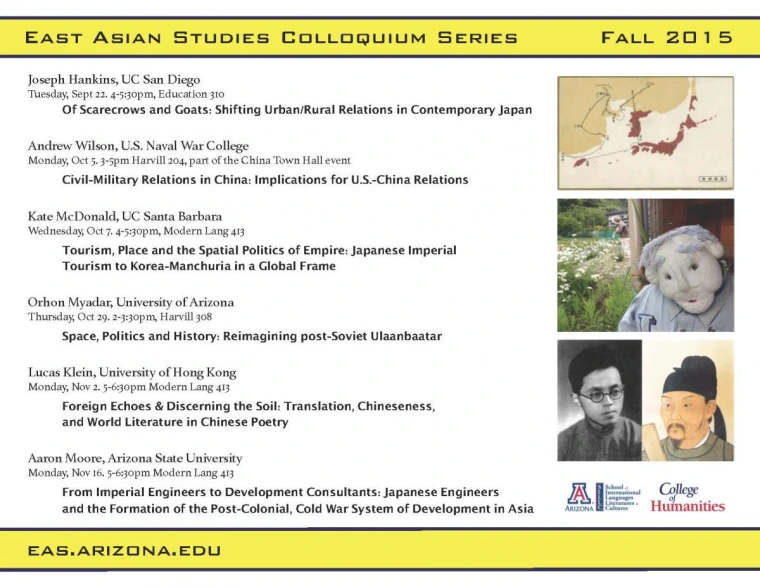Joseph Hankins is Associate Professor of Anthropology at UC San Diego. He received his Ph.D. from the University of Chicago in 2009. His research focuses on the distribution of ethical, affective, and sensory obligation at the intersections of contemporary capitalism and political representation. His book, Working Skin: Making Leather, Making a Multicultural Japan, examines the politics of stigmatized labor in contemporary Japan. He teaches courses on labor and semiotics, liberalism and sympathy, and circulation and politics. He is affiliate with Critical Gender Studies, the Studio for Ethnographic Design, and the Center for New Racial Studies.

http://anthro.ucsd.edu/people/faculty/faculty-profiles/joseph-hankins.html
Title: Of Scarecrows and Goats: Shifting Urban/Rural Relations in Contemporary Japan
Abstract:
There is a small, remote village nestled in the rural mountains of Japan’s fourth-largest island where 150 scarecrows outnumber people five to one. Fifteen years ago, one of the youngest people still in the village, a woman now 68 years old, started making life-sized effigies of people who had left – who had either passed away or moved away to larger cities and other opportunities. Clad in the clothing of the departed, these effigies sit throughout the village – at the bus stop past which buses no longer run, in the classrooms of a closed elementary school, in the fields that now grow nothing but weeds. These now 150 scarecrows more vigorously populate the village than does the aging, frequently house-bound population of 30 humans.
Another remote village on a yet smaller island in Japan’s Seto Inland Sea provides a very different slice into rural Japanese life. There, after a bought of depopulation during the 1980s and 1990s, young people are arriving from the cities in droves. Mostly in their thirties and forties, these people have moved to this small island town to seek out a better, more sustainable future, to, as some phrase it “reclaim life.” Learning to farm, harvest sea-salt, raise pigs or goats, this new, post-Fukushima group of back-to-the-landers are worn out by the futures afforded them in cities and instead are working to forge a different relationship with the planet, with each other, and with their futures.
Both of these efforts indicate an extreme unease with life as it has been conducted up to this point and an attempt to create an otherwise. In one moment, humans themselves have been evacuated, creating an eerie landscape of an agrarian communalism that perhaps once was and never is to be. In the other, people are disaffected with the options, or lack thereof, afforded by late capitalism, particularly in the radioactive shadow of TEPCO prevarication and governmental collusion post-Fukushima. This talk follows trajectories in and out of urban centers in Japan to see how politics are being conducted at a distance from hitherto regnant forms of government. Outside of urbanized, modern forms of politics, and yet intimately indebted to precisely those forms of governance, these new objects of human efforts – scarecrows and goats – serve as indications of a resistance not immediately recognizable as political but that nevertheless unfolds as structural transformation.


